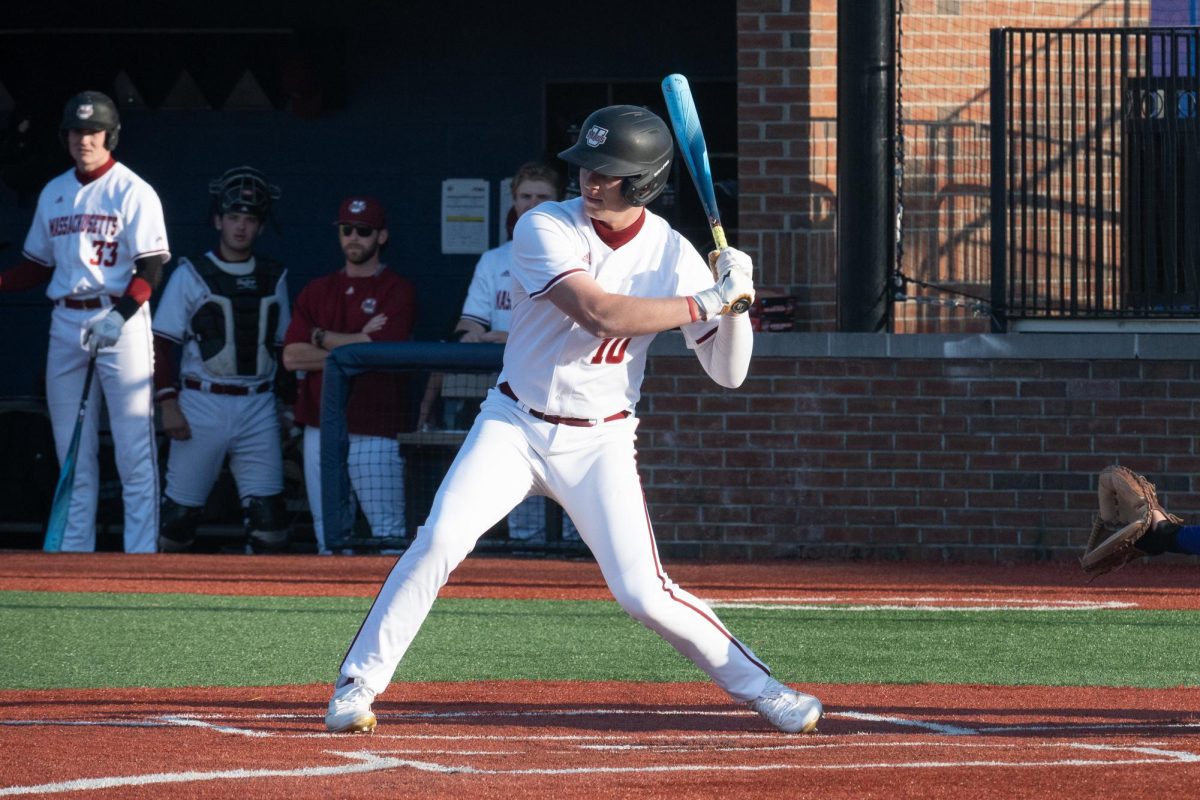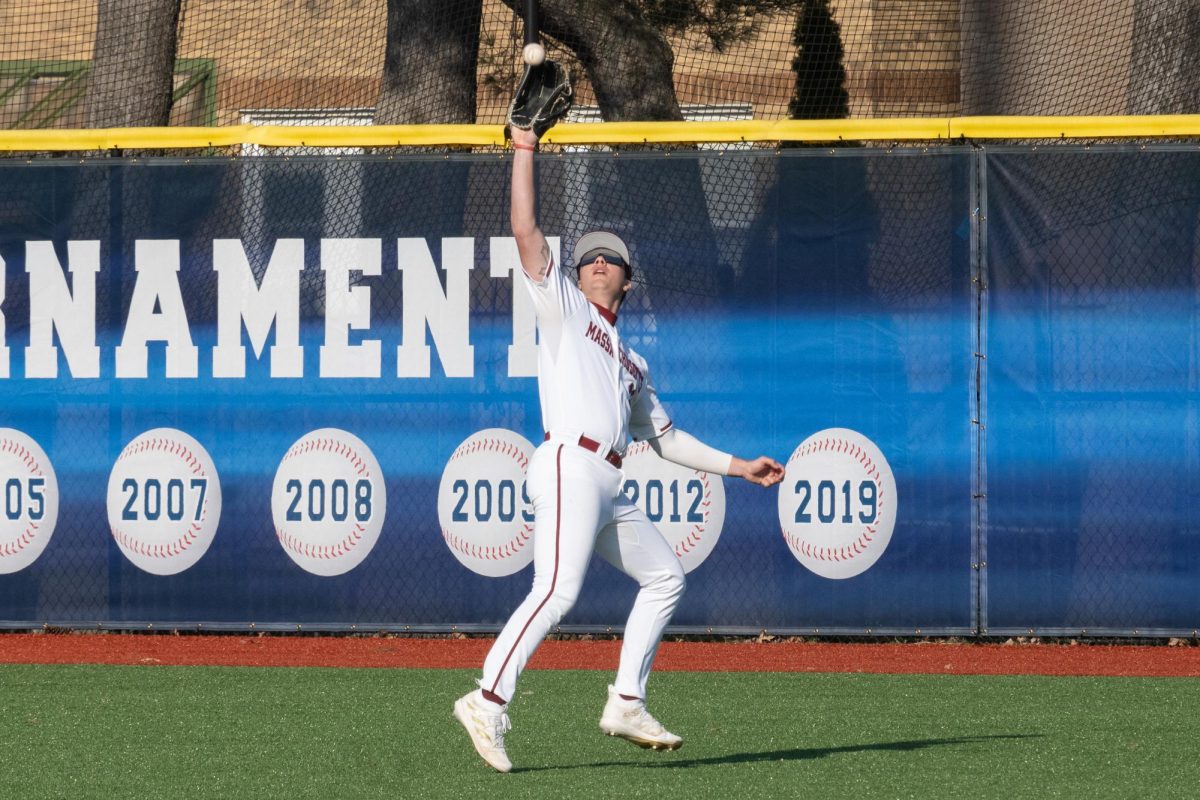Before college, I had never heard of a NARP, but it didn’t take more than a few days in a University of Massachusetts locker room for me to notice the term circulating. An acronym for a Non-Athletic Regular Person, NARP is a derogatory term for any college student who is not a varsity athlete and is used to widen the social divide between athletes and non-athletes.
NARP isn’t unique to UMass either, appearing in the Instagram feeds of ‘retired’ athletes, filling seven pages of Urban Dictionary results and littering the vocabulary of college students across the country. Ultimately, the term has become a staple piece of jargon among the athletic community.
While athletes would likely argue that it is used only in jest, the term’s connotation is blatantly offensive. Since it is not a “real” word, it is college students themselves who are defining it, and they aren’t painting it in a good light — on Urban Dictionary, the top two definitions for NARP carry hashtags like, #douchebag, #fat, #fugly, #nerds, #poser and more.
An article by University of Texas at Austin student, Molly Burke, provides advice to students who were athletes in high school but aren’t pursuing their sport at the college level in what she describes as “a guide to preserving your dignity as a newly-minted NARP.”
Student journalist Shannon Longworth of Boston College wrote in an article “From D1 Athlete to NARP: Why I Walked Away from the NCAA” that the term is used by college athletes to make a “jab at their buddies as they scarf down mozzarella sticks and laugh at taking trips to the gym.” Because, obviously, if you’re not part of the seven percent of the national high school athlete population that pursues a varsity sport in college, this is all you do with your time.
The problem with the term does not so much lie in its effect on those it refers to but those who use it. NARP, like so many other adjectives, is used to label people. It takes the complex, unique and highly dependent collection of personality traits that make up a human and boils them down to one word meant to serve as an all-purpose archetype.
The impact of using such a label might be greater than people know. A study published by the American Psychological Association looks at how high school students view others based on labels rather than actions. The study looks at two possible belief systems: the entity theory, which promotes the belief that personality is fixed and the incremental theory, which suggests that people’s identities can change.
Students in the study who were determined to think using the entity theory had an overall worse high school experience. They showed higher signs of anxiety in social situations and even performed worse academically than their peers who were taught to think using the incremental theory.
To relate this back to the issue of NARP, the basic idea is that athletes in the college community use the term to categorize their non-athletic peers. By doing so, they mentally strip them of their individuality and begin to think of them as “others.” At the same time, they are labeling themselves as being athletes over all else, a construct that can be mentally, academically and socially damaging.
By labeling themselves and others with the term NARP, students are creating a divide in the student population and fostering a negative campus culture. This is something that Amherst College picked up on in 2017. The school released a report, which was laid out in an article by the Daily Hampshire Gazette, explaining that athletes tended to live and party together and avoided certain majors and classes that would be more intensive and close knit. Because of this, there was a clear separation at Amherst College between athletes and non-athletes which the administration was concerned was undermining the general student experience.
Amherst College decided to address the issue by redistributing student housing to ensure athletes and non-athletes had exposure to each other. There is only so much the higher powers of a school can do, though, to end a culture of separation. When it comes down to it, it is on the students themselves to recognize both their differences and similarities, to embrace a new and diverse environment, and to make an effort to identify as part of a unified student body.
Part of this is how students speak about each other. If athletes voice the idea that there is some fundamental difference between them and their non-athletic peers, they will believe that such a divide exists and, from this belief, legitimate social lines will be drawn.
Stop using the term NARP. Stop elevating athletes over other students. Stop separating the student body based on arbitrary differences. Instead, recognize the individual personalities of each student and strive for an educational experience built on diverse human connections.
Lily Robinson is a Collegian Contributor and can be reached at [email protected].




















Gabe • Dec 5, 2019 at 11:34 am
I appreciate you changing the photo. I think it was the right decision.
Gabe • Dec 4, 2019 at 12:50 pm
Completely understand how that term might have hurtful connotations to many, but it feels pretty inappropriate to have a photo of a specific current student athlete, with their name visible, attached to this article. Especially since there is no mention or evidence of that student using the term .
Jim ennis • Dec 4, 2019 at 7:41 am
In the mid 70s UMass did its best to integrate athletes into all dorms, there were no “Jock” dorms on campus, there were a few jock frats. The athletes were spotlighted with maroon wind breakers and jackets , and the ever present grey tee shirts stamped with UM. Worn by most to all athletes, so not to have to do laundry. Maybe today a better job is done melding the student athletes into anonymity. Eliminating the use of NARPS